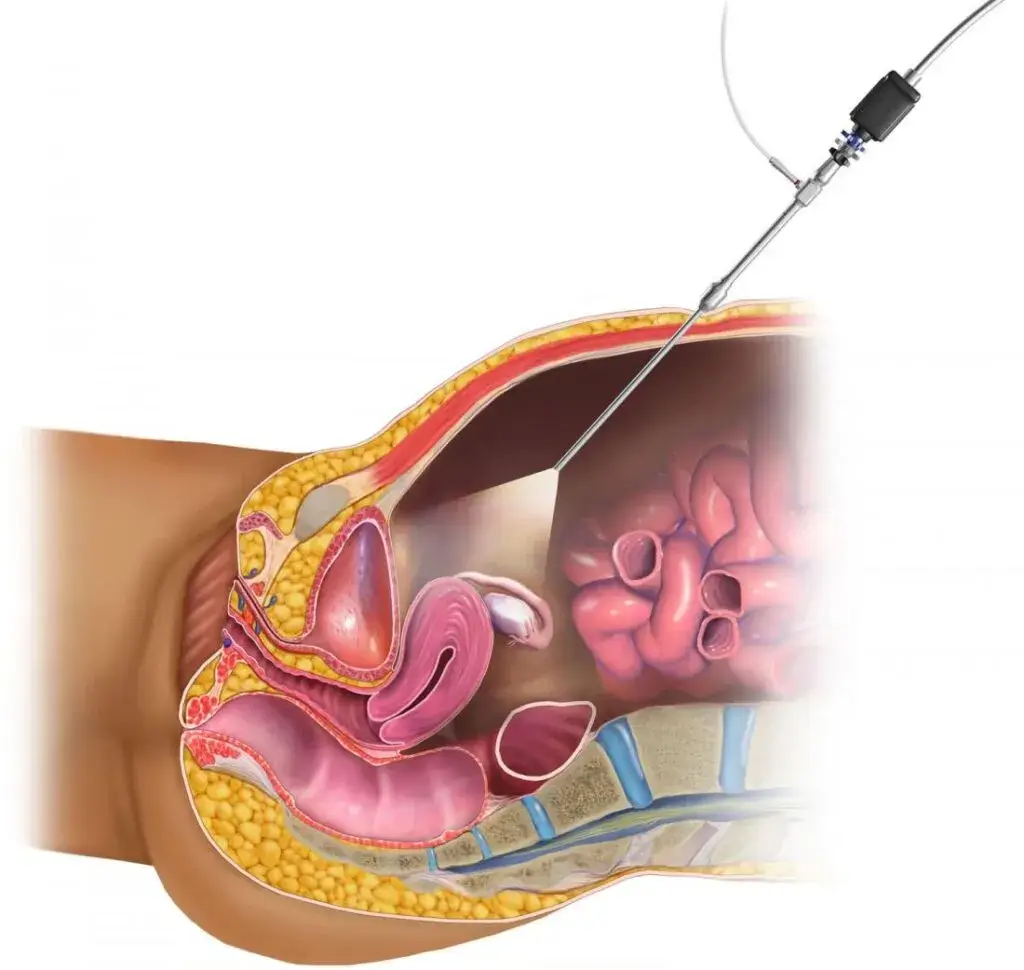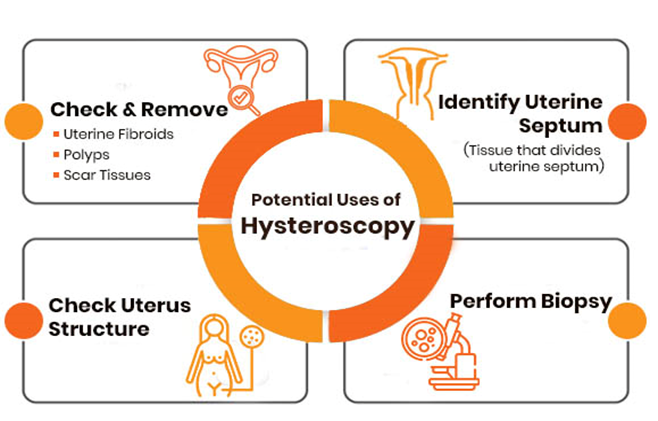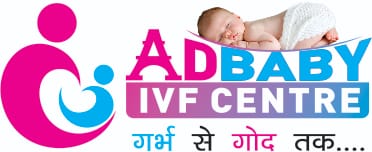Infertility Diagnosis & Treatment with laparoscopy
Laparoscopy Surgery at AdBaby IVF Centre is done with the latest technology with an advanced diagnostic approach as well as blocked fallopian tube infertility treatment approach. It is usually recommended in cases where all other diagnostic approaches fail to indicate the actual cause of infertility. The decision to undergo laparoscopy must be thoroughly evaluated by a fertility expert.
How Laparoscopic Surgeons Diagnosis and Treatment?
A laparoscopy is a surgical operation in which a Laparoscopic Surgeons use special equipment all like Laparoscope to examine organs, in the abdomen, through much smaller cuts.
A laparoscope is what can be regarded as a thin, fiber-optic tube though in its operation; it is connected to a camera and uses much light to deal with the issue. The surgery is done under general anaesthesia and the operation lasts a few hours.

What are the Characteristic Features of PCOS and When Laparoscopy Surgery is Recommended for Women?
It is perhaps relevant to mention here that laparoscopy should not be a routine procedure especially when the choice available for diagnosing and treating some types of infertility has to be explored last. A laparoscopy may be advised by the fertility expert where such a patient is affected by the following or where the doctor has reason to believe in the following;
- Pelvic inflammatory disease or severe pelvic adhesions
- Pain during sexual intercourse
- Severe cramps or pelvic pain during your periods
- Ectopic pregnancy
In other cases, laparoscopy for infertility treatment may be conducted to correct the following issues.
Blocked Fallopian Tubes – The doctor may choose to remove the affected tube during laparoscopy to improve the IVF success rate. This is normally conducted in case Hydrosalpinx is suspected.
Repair the Damaged Tubes- The doctor may also recommend a laparoscopy to correct the tubes and allow natural conception.
Elimination of Endometrial deposits- Some doctors may recommend a laparoscopy to remove the endometrial deposits which trigger excess pain.
PCOS “Polycystic Ovary Cysts”- the doctor may recommend ovarian drilling in order to remove the cysts and facilitate normal ovulation
Fibroids- Fibroids which are accompanied by pain can also be treated laparoscopically to combat the painful adhesions among other effects.
The Laparoscopy Procedure Infertility Testing and Treatment
In case it is a diagnostic procedure, the doctor will only view the reproductive organs and then schedule the repair surgery later. The procedure is conducted under general anaesthesia and it is completely pain-free. The surgeon or doctor may restrict you from eating or drinking for 8 hours before the surgery. He or she may even ask you to get antibiotics.
Once the anaesthesia is given full effect the surgeon will then proceed to cut your tummy area one or more times. A surgeon will make an incision and introduce carbon dioxide gas into the abdominal cavity for visibility to accomplish the problem.
The Results and The Following Treatments
The surgeon may remove the scar tissue, correct the blocked Fallopian tubes, remove the fibroids and so on. You take some time to recover, but it is normally a short period since a laparoscopy is a minimally invasive surgery In case the results are normal, the doctor will plan the following conception treatments as seen required. If at all the adhesion or fibroid is cut off through surgery, there won’t be the aching that many women experience during their menstrual periods or during intercourse.
HYSTEROSCOPY
That is an operation in which a woman’s uterus and cervical cancer are checked. For diagnosing the medical instrument which is used is called hysteroscope. The instrument is not only helpful in diagnosing but it also rectifies various uterine complications.
A hysteroscope is a medical instrument and it has a camera attached with it as well as on one end there is the light source. With this, the surgeon can examine the problem properly and the instrument is inserted into the woman’s vagina. With the camera images are taken which helps the doctor to examine the problem and where it exists so that if any corrective action is required it can be taken. Hysteroscopy Surgery is available in Zirakpur as the doctors there are very well trained and skilled.
Infertility Diagnosis & Treatment with laparoscopy
Infertility has become a major health issue and the diagnosis, treatment with laparoscopy is one of the best options to overcome the problem.
In case of the following the doctor will advise that you undergo this procedure:
- Pelvic inflammatory disease or severe pelvic adhesions
- Pain during sexual intercourse
- Severe cramps or pelvic pain during your periods
- Ectopic pregnancy
- Ectopic pregnancy

How Hysteroscopy improves fertility?
Today menopausal women and infertility issues are common and hysteroscopy optimizes fertility. There are many women who experience endometrial polyps, submucous fibroid, adhesion, or septum. Lastly, this problem leads to impotence and women experience difficulty when getting pregnant. This also means the women face the difficulty in the fertilization process as well as in implantation of the egg. In some cases, the problem can be solved with Hysteroscopy and it also increases the chance of a woman to conceive successfully.
How the procedure is performed?
Before the procedure
Before the Hysteroscopy, the women are given medication which helps her in relaxing. To ease the pain, general or local anesthesia can be given and it depends on the situation. Along with this, to open or dilate the cervix medications are given as it makes the process easier.
During the Procedure
There is an instrument called speculum, put right into the vagina to widen it more. To make the lining of the uterus visible a gas called carbon dioxide is passed into the uterus all through the hysteroscope. After that, the hysteroscope is moved gently and all this process is visible on the screen. This helps the doctor to observe the problem by looking at the images. To remove the fibroids hysteroscope surgical tool is used. The procedure takes 30 minutes but if only a diagnosis is required then it takes 10 minutes only. After the procedure, the women might experience cramps.
Benefits
The benefit of this procedure is that hospital stay is very short, recovery time is fast, open abdominal surgery is avoided, and fewer pain medications are required.


